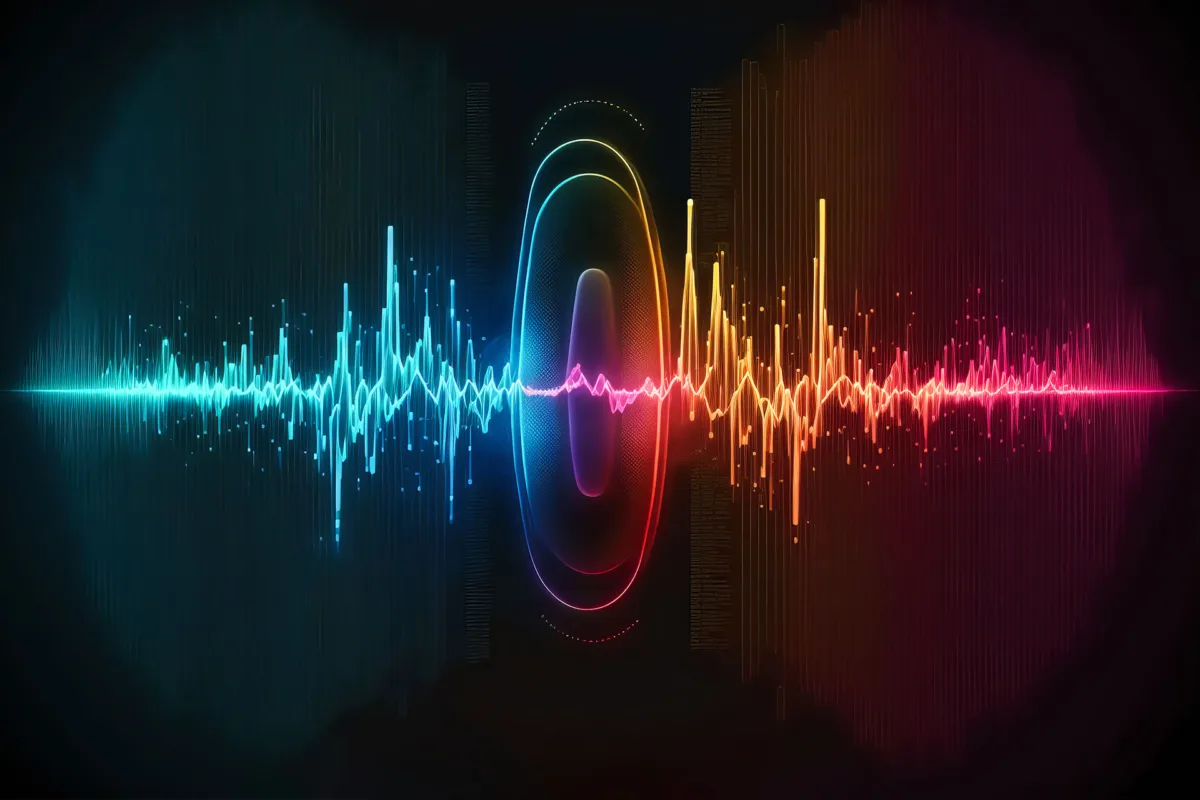WAV vs MP3 Audio Quality: Which Format Works Best for Video Content?
WAV vs MP3: Choosing the Right Audio Format for Video Editing
In video production, audio isn’t just a sidekick—it’s the co-star! The correct audio format can elevate your video from “meh” to “wow,” while the wrong one might leave your audience tuning out. Enter WAV and MP3—two audio heavyweights that can make or break your project. Each comes with its superpowers and quirks, and knowing when to use them can be the difference between a cinematic masterpiece and a less-than-stellar final cut.
In this post, we’ll break down the battle between WAV and MP3 so you can choose the perfect format to give your video that extra punch!
Understanding WAV and MP3
WAV: Lossless Quality, Large Files
WAV (Waveform Audio File Format) is a lossless audio format. This means that when audio is saved as a WAV file, no data is lost in the process. The format retains the full, uncompressed quality of the original recording. As a result, WAV files deliver exceptional sound quality and are the preferred choice for professional audio work, such as music production, film scoring, and mastering.
Advantages of WAV:
- Superior Audio Quality: Since WAV files are uncompressed, they provide crystal-clear, high-fidelity sound. Every detail of the original recording is preserved, making it ideal for projects where audio clarity is paramount.
- Editing Flexibility: Lossless audio formats like WAV allow for more detailed audio editing without degradation in sound quality. Editors can apply effects, make changes, or convert the audio without losing information.
- Universal Compatibility: WAV is widely supported across different operating systems, video editing software, and professional audio tools.
Disadvantages of WAV:
- Large File Size: The main downside of WAV files is their size. A typical WAV file can be up to ten times larger than an MP3 of the same length. This can put a strain on your storage space, make file transfers slower, and consume more bandwidth during uploads or streaming.
- Storage Considerations: Due to their size, WAV files require ample storage, which can be a limiting factor, especially in large-scale projects where multiple audio tracks are involved.
MP3: Compressed for Efficiency, Potential Quality Loss
MP3 (MPEG-1 Audio Layer 3) is a lossy, compressed audio format designed to reduce file size while maintaining an acceptable level of audio quality. MP3 files are optimized for efficiency, making them an excellent choice for a wide range of projects, from online sharing to playback on devices with limited storage.
Advantages of MP3:
- Smaller File Size: MP3 compression dramatically reduces file size, making it easier to store, transfer, and stream audio files. This is especially important for large video projects with multiple audio tracks or projects that will be shared online.
- Broad Compatibility: MP3 is one of the most widely supported audio formats across devices and platforms. From mobile phones to web browsers, MP3 files are universally playable, ensuring that your audio will work smoothly for a broad audience.
- Quick Transfers and Streaming: Due to their smaller size, MP3 files are faster to upload, download, and stream, making them ideal for online video content, podcasts, and other media intended for fast distribution.
Disadvantages of MP3:
- Loss of Audio Quality: The main drawback of MP3 is that the compression process removes some audio data, which can result in a loss of quality, particularly in higher-frequency sounds. While the difference may not be noticeable in casual listening, it becomes more apparent in professional contexts, especially when compared directly to WAV.
- Limited Editing Potential: Since MP3 is a lossy format, repeatedly editing and saving the file can lead to further degradation in sound quality. This makes it less ideal for projects that require extensive audio post-production.
Key Considerations for Video Editors
When deciding between WAV and MP3 for your video projects, several factors come into play. Here’s a breakdown of what you should consider:
1. Audio Quality
The most significant difference between WAV and MP3 is sound quality. WAV files are uncompressed and lossless, meaning they retain all the original audio data, providing the highest quality sound. This makes WAV ideal for professional video projects like films, commercials, and music videos where audio fidelity is essential.
On the other hand, MP3 files are compressed to save space, and as a result, they lose some data, which may lead to a slight reduction in sound quality. For casual projects, vlogs, or online content where perfect sound isn’t necessary, MP3 provides audio that is “good enough” for most viewers and listeners.
2. File Size
WAV files are significantly larger than MP3 files. A single minute of uncompressed WAV audio can take up tens of megabytes, while a similar-length MP3 may be only a few megabytes in size. This becomes particularly important when dealing with lengthy video projects or multiple audio tracks.
If you’re working on a video project that involves a lot of sound design, voiceover, or music, the sheer size of WAV files can quickly add up. This can impact storage, transfer speeds, and even video rendering times.
3. Project Requirements
If you’re working on high-end projects, such as films, commercials, or videos with intricate sound design, WAV is the better choice. It offers pristine audio quality and flexibility for editing, ensuring that your final product sounds as good as possible.
For more straightforward projects, such as vlogs, social media videos, or non-professional content, MP3 is often sufficient. The smaller file sizes make it easier to work with, especially when uploading or sharing your video online.
4. Software Compatibility
Most professional video editing software, such as Adobe Premiere Pro, Final Cut Pro, and DaVinci Resolve, support both WAV and MP3 formats. However, it’s always a good idea to double-check your software’s compatibility, especially if you’re working with less common or older editing platforms.
Tip: Even if your software supports MP3 files, it’s worth considering that working with compressed audio in post-production can sometimes lead to issues, particularly when making extensive edits or applying effects. For this reason, many editors prefer to use WAV during the editing process, converting to MP3 only when the project is finalized for distribution.
When to Use WAV in Video Editing
WAV is the go-to format for video editors who prioritize audio quality. Here are a few scenarios where using WAV is ideal:
- High-End Video Projects: For films, commercials, music videos, and other professional-grade productions, the superior quality of WAV is essential. These projects often require pristine sound that matches the high visual quality, and WAV ensures that no details are lost.
- Projects with Music or Complex Sound Design: If your video involves intricate soundscapes, multi-layered music tracks, or a lot of dialogue, WAV provides the clarity and detail needed to enhance these elements.
- Archiving and Mastering: WAV is an excellent choice for long-term archiving. If you plan to revisit a project in the future for remastering or repurposing, WAV files retain all the original quality, ensuring flexibility for future edits.
- Dialogue-Centric Projects: For interviews, documentaries, or narrative content where clear and detailed speech is essential, WAV helps maintain the fidelity of human voices, which is critical for ensuring the audience can easily understand dialogue.
When to Use MP3 in Video Editing
While WAV offers the best quality, MP3 has its own advantages, particularly in terms of file size and convenience. Here are scenarios where MP3 makes sense:
1. Fast Projects: If you’re working on a quick turnaround project or something that doesn’t require high-end audio, MP3 is a practical choice. It’s faster to process, transfer, and edit due to its smaller size.
2. Non-Professional Videos: For casual or personal videos like vlogs, family videos, or short online clips, MP3 provides audio quality that is more than adequate while keeping file sizes manageable.
3. Temporary Drafts: During the early stages of video editing, when you’re just rough-cutting footage, MP3 can serve as a placeholder. You can switch to WAV for the final export if higher quality is needed.
4. Podcasts and Online Courses: These projects typically prioritize speech and are distributed online, making MP3 a good fit for efficient file sharing and streaming without sacrificing too much in terms of audio clarity.
Conclusion
When choosing between WAV and MP3 for video editing, the decision comes down to your specific project needs. WAV is the preferred option for high-end projects where sound quality is paramount, and storage or file size is not an issue. Its lossless nature ensures that every detail of the original audio is preserved, making it ideal for professional-grade productions and projects with intricate sound design.
On the other hand, MP3 offers a practical balance between quality and efficiency. Its compressed format makes it suitable for projects with limited storage or bandwidth, such as online videos, social media content, or personal projects. While the audio quality may not be as high as WAV, MP3 is sufficient for most casual or less demanding video productions.
Ultimately, understanding the strengths and weaknesses of both formats allows you to make an informed decision that best aligns with your video editing goals. Whether you’re aiming for the highest quality possible or need to prioritize efficiency and file size, both WAV and MP3 have their place in video editing.















